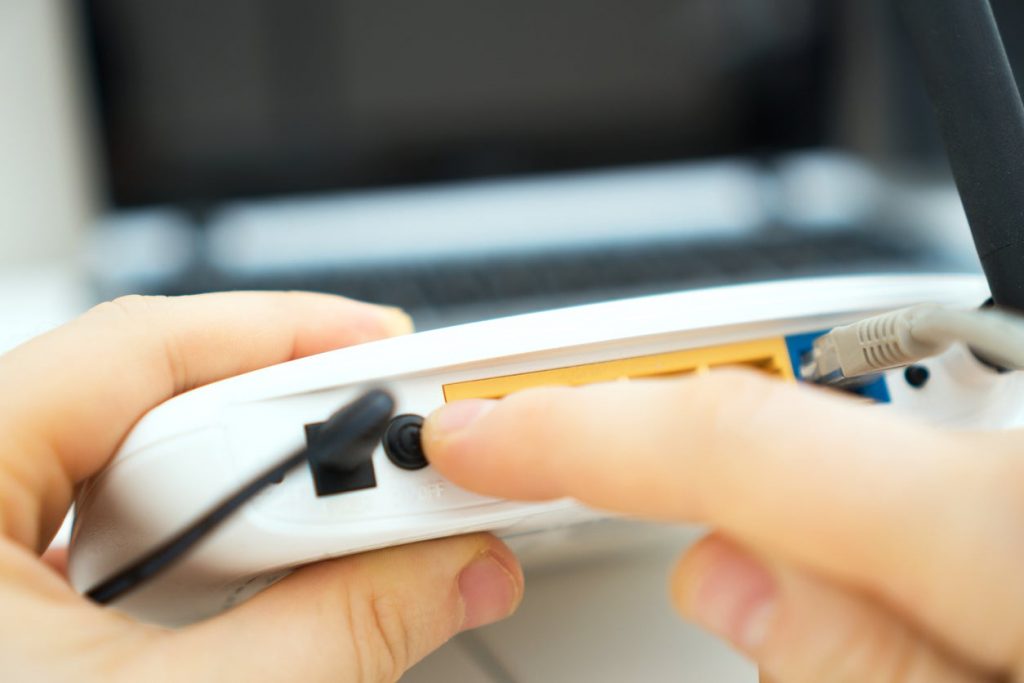When the router’s memory gets full, you may notice that your network steadiness and speed are slowed down and not like before, meaning your router tells you it needs a power cycle. Power cycling the WiFi router every two months is good because it needs to refresh its data and free some memory from unnecessary information.
It is important to leave the devices off for a few minutes before plugging them back into power. The power cycles will be ineffective if you do not consider the resting time. So, let’s get started and discover how to power cycle a router!

How to Power Cycle a Router
In general, power cycling of every device happens when you unplug the specific device from the power source and leave it off until it refreshes its memory and erases the unnecessary data. You can do this with your router, modem, and computer.
The power cycling has “resting” cycles in between that should be followed for a successful router restart. If you are not letting the device flush the unnecessary data and power, the restart would not have an effect. To do it, stick to the following steps:
- Unplug the Internet modem power cord from the power output.
- Unplug the WiFi router from the power output as well.
- Wait for a few seconds until the devices flush the leftover power.
- Plug the devices back to power, considering the resting cycle between the connections.
Detailed guide
The first step is unplugging your modem and router from their power source. Before unplugging, you can turn them off by pressing their power button, if they have any. The power button should be bigger and named “Power” underneath or have the power sign. Please do not mistake it with the restart button!
Leave the devices off for at least 30 seconds. This is the key moment when you must leave the devices off until they deliver the information of no power to the hardware and software. These 30 seconds make the devices forget the unnecessary information that takes up space and disturbs the internet connection.
Then, plug the modem into the power and wait 60 seconds to two minutes until plugging in the WiFi router. After one or two minutes, turn the router back on and wait until all lamps turn green. After everything turns green on the router and modem, you can test the refreshed internet connection.
Why do we have to wait between the cycles?
The waiting period is the most important part of router power cycling. The device needs time to reset, which usually may take from 30 seconds to two minutes. During those two minutes, the device sends a message to the software that there is no power and the device will shut down soon.
During the waiting period, the device discharges everything and clears the memory. This is also known as the rebooting process, which allows the router to get back into a stable state without the data that hinders WiFi steadiness and speed.
The waiting allows the router to take a break from the data transmission since it is a device that works 24/7, even longer than your computer and smartphone.
Restarting is not the same as resetting
You must distinguish these two functions. Restarting your router means you make a power cycle that turns the router off and back again.
During restart, the router and modem reboot and erase the unnecessary data stored in their memories. This process lets the device clean up some space and enables a better internet connection that was otherwise hindered by unnecessary data.
Conversely, the resetting process is an entirely different thing. Resetting the router will delete all data, information, and changes you have made and will return the router settings to default. This process will remove the WiFi password you have set and disconnect all connected devices, which is not what we want to happen in this case.
To initiate the resetting process, you should press the tiny “Reset” button on the back of your router, while restarting requires turning off and on the power button.
What Happens During the Power Cycle?
The power cycle refreshes the router’s memory and awakes it again. During the two minutes of shut down, the router makes the following changes:
Cleans up the cache
The router’s memory is also known as a cache. The restarting process makes some clean-ups and removes data bugs from the router’s cache. Clogged router memory might be the first thing that slows down your internet connection. A cleaned-up cache enables the router to run smoothly and provide better data transfer.
Improves connection
The improved internet connection is the most visible effect of the router power cycle. Suppose you restart your router once a month or for two months. In that case, you will never face serious internet connection difficulties because the power cycle enables a steadier and uninterrupted internet connection.
Fixes minor issues
A simple power unplugging might fix your router and many problems that affect the speed and quality of the internet connection. The reboot cleans up the memory, data, and some minor issues that also harden the internet flow.
Gives better security
Restarting your router does not clean only the cache. It may also eliminate malware from the software.
The restart might not prevent hacker attacks, but it is good for removing the possible threats from the device once a month or a couple of months. If you suspect your WiFi router has been hacked, it is best to use the factory reset option.
Read more: How to Reset Arris Router
Conclusion
Restarting your router over time might bring many benefits for a steadier internet connection. We will be happy if this article has helped you understand how to power cycle a router and why it is important to wait for a few minutes between the cycles.
Give it a try now, and you will see the improvements immediately after connecting to the network again.